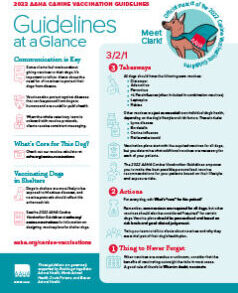As counties in Florida brace for an icy chill, the National Weather Service (NWS) has issued freeze warnings to protect vulnerable people, pets, and plants.
Sub-freezing temperatures, driven by a widening polar vortex, are expected to sweep across the Sunshine State and neighboring southern regions.
With lows dipping as far as 27 degrees Fahrenheit in parts of northeastern Florida and southern Georgia, the NWS is urging pet owners to bring their animals indoors, particularly those sensitive to the cold due to age, breed, or health conditions.
How Cold Is Too Cold to Walk My Dog?
When it comes to deciding if you should take your dog for a walk or not, understanding their cold tolerance is the first step.
- 41°F and below: Small or thin-coated dogs may start to feel uncomfortable in these lower temperatures. Consider a dog coat, shorter walks or skipping a walk for these dogs.
- 32°F: Small breeds, elderly dogs, puppies, and those with slim builds are at greater risk when the temperature hits freezing. Extended exposure should be avoided.
- 23°F and below: At this point, outdoor walks are not recommended for any dog, regardless of size. Risks to pets at these temperatures include hypothermia, frostbite, and cracked paw pads.
Is It Bad for Dogs’ Paws To Walk in the Cold?
The cold can cause a variety of problems for furry friends. Low temperatures can lead to cracked paw pads and noses.
Catrin George, animal wellbeing specialist and Animal Friends Pet Insurance, told Newsweek: “To prevent health risks such as hypothermia, frostbite, as well as cracked paws, pads or noses.”
Can Dogs Get Sick From Walking in the Cold?
Low temperatures can lead to more serious health issues for dogs, particularly smaller dogs, puppies and elderly dogs who are more susceptible to hypothermia and frostbite.
“No dog should be taken out for a walk if the weather drops below 23°F,” George said. “However, smaller dogs, puppies, elderly and skinny dogs are more susceptible to the chill, with anything below 32°F proving potentially dangerous.”
“On colder days, it may be a good idea to keep your walks limited to under 20 minutes to prevent them (and you) from getting too chilly. Heading outside during the warmer part of the day (11 a.m.-3 p.m.) is also a good place to start,” she added.

A file photo of a dog wearing a coat and boots to protect it from the cold. Experts have given advice on when it is too cold to walk your dog.
AFP PHOTO / NATALIA KOLESNIKOVA/Getty Images
How To Tell if a Dog Is Cold
“Even when we think that the weather is bearable, the same may not be true for your pet. When out and about in the winter months, it’s vital to keep an eye on your dog’s comfort,” George said.
Signs that your dog might be struggling in the cold include shivering, whining, reluctance to move, holding paws up, seeking warmth, or acting disoriented.
“If you see any of these, head home immediately and warm up. If symptoms continue, contact a vet for guidance to help prevent any cold-related illnesses,” said George.
More Expert Tips on Keeping Your Dog Warm in Cold Weather
Smaller breeds like dachshunds and Yorkshire terriers need extra protection like coats or boots in the cold weather to keep them warm and protect from health issues.
But not all dogs are created equal when it comes to braving the cold. German shepherds and huskies might even enjoy being outdoors in the cold weather, and reaching for a dog coat may not be the answer for these dogs. “Thin-coated dogs can benefit from a warm jacket but you need to be careful of putting a coat on a fluffy dog as it can stop their fur trapping heat that works as natural insulation,” George said.
This post was originally published on this site be sure to check out more of their content.








































